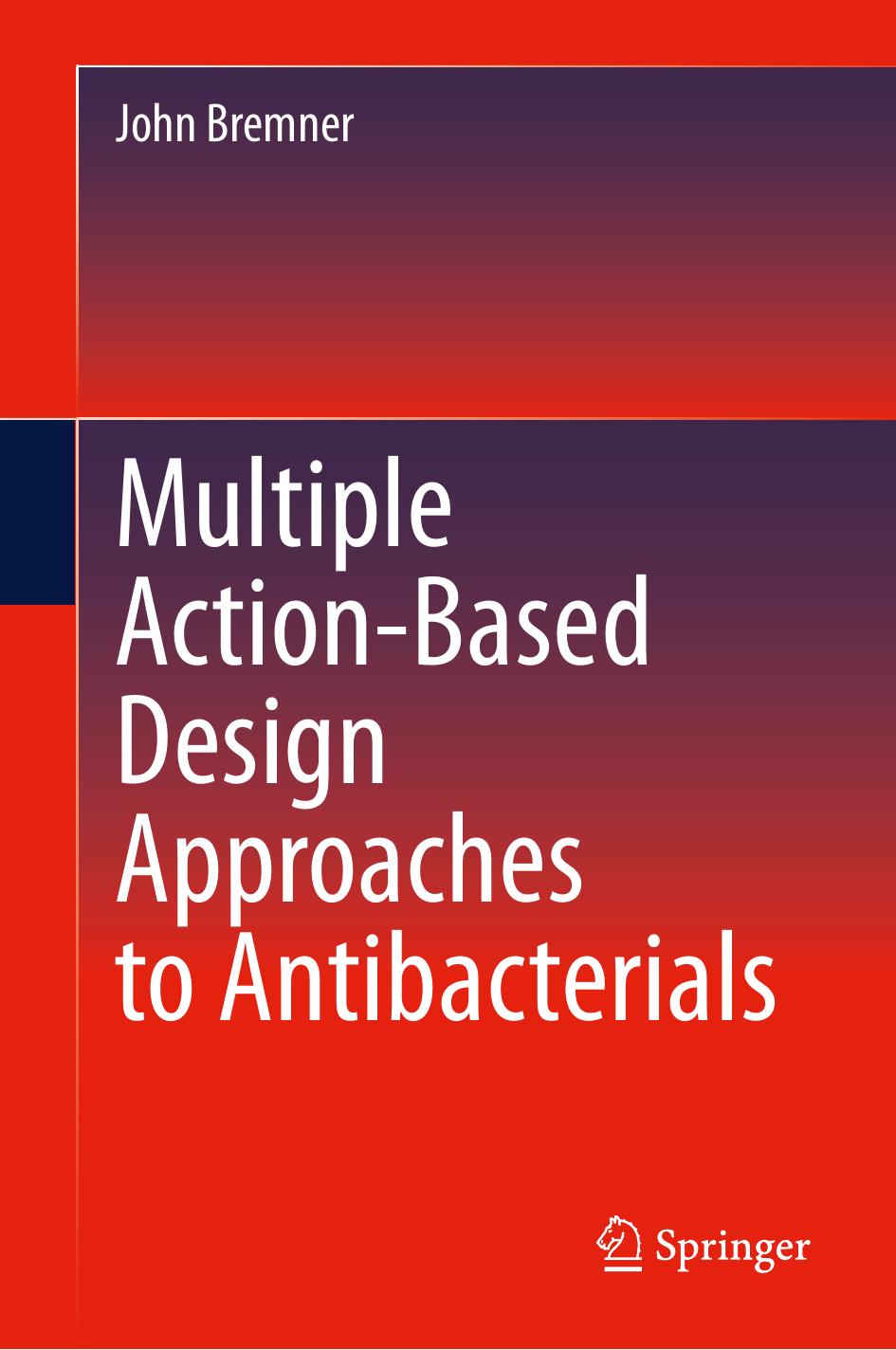Multiple Action-Based Design Approaches to Antibacterials by John Bremner

Author:John Bremner
Language: eng
Format: epub, pdf
ISBN: 9789811609992
Publisher: Springer Singapore
Berberine has moderate antibacterial activity by inhibiting the assembly of FtsZ, as do berberine analogues (Mori-Quiroz et al. 2018). In this paper the authors also indicate de novo synthesis of berberine analogues is underway and this represents an alternative approach to chemical modifications of berberine and related isoquinolinium alkaloids for SAR studies. Worth considering both approaches. The design of berberine-based FtsZ inhibitors which have broad spectrum antibacterial activity has also been reported by Sun et al. (2014). Two binding sites on FtsZ were found with one being the C-terminal interdomain cleft and the other the GTP-binding site. The potential for a number of FtsZ binding sites was also revealed in an in silico analysis by Kusuma et al. 2019 (Kusuma et al. 2019). Continuing this theme, an important recent review by Casiraghi et al. (2020) has summarized a range of FtsZ inhibitors classifying them according to their main protein binding sites, which is very useful from a medicinal chemistry perspective in enabling some future design ideas with respect to targeting a number of the protein sites.
Berberine can be demethylated in high yield to the corresponding 9-hydroxy analogue berberrubine, a compound which, although classified as an alkaloid, is usually an artifact of isolation from plant sources (Grycová et al. 2007). Other substituted berberines can also undergo this thermal demethylation process. The demethylation can be accomplished by straightforward thermolysis (Lo et al. 2013) providing a convenient hook for the attachment of further groups by reaction at the 9-OH site produced (Li et al. 2010). The 9-hydroxyl group can also possibly serve to direct further nucleophilic attack, for example by boronic acids in a Petasis type reaction (Guerrera and Ryder 2016) (Guerrera and Ryder 2016), to afford 8-substituted derivatives of the type shown in Fig. 3.22c and d. For systems of the latter type, standard azide-based click chemistry (Thirumurugan et al. 2013) could then be used to attach a unit with the recognition element C as in Fig. 3.22e.
While berberrubine itself displays only weak to very weak antibacterial activity against the Gram-positives Micrococcus luteus (Kim et al. 2002) and Mycobacterium smegmatis (Gharbo et al. 1973) greater potency through increased target interaction possibilities may result from conversion of the phenolic hydroxyl group at C9 in both compounds Fig. 3.22c and e to the fluorosulfate group using SuFEx click chemistry (Liu et al. 2018). Toxicity considerations in the handling of the initially required gaseous reagent for this reaction, sulfuryl fluoride, has been mitigated by the introduction of fluorosulfuryl imidazolium salts which are bench-stable and act as alternative donors of the âFâO2S+â unit. An excellent detailed review of SuFEx chemistry and applications in late-stage functionalization strategies for bioactive compounds has been published recently by Barrow et al. (2019). The introduced SO2F group is also a useful handle to add other pharmacophores.
Another valuable reaction of berberine and congeners is the direct introduction of secondary amino functionality at the 9-position by an aromatic nucleophilic displacement reaction with primary amines. Although yields were moderate in the case of palmatine,
Download
Multiple Action-Based Design Approaches to Antibacterials by John Bremner.pdf
This site does not store any files on its server. We only index and link to content provided by other sites. Please contact the content providers to delete copyright contents if any and email us, we'll remove relevant links or contents immediately.
| Automotive | Engineering |
| Transportation |
Whiskies Galore by Ian Buxton(41867)
Introduction to Aircraft Design (Cambridge Aerospace Series) by John P. Fielding(33064)
Small Unmanned Fixed-wing Aircraft Design by Andrew J. Keane Andras Sobester James P. Scanlan & András Sóbester & James P. Scanlan(32743)
Craft Beer for the Homebrewer by Michael Agnew(18140)
Turbulence by E. J. Noyes(7935)
The Complete Stick Figure Physics Tutorials by Allen Sarah(7307)
Kaplan MCAT General Chemistry Review by Kaplan(6866)
The Thirst by Nesbo Jo(6826)
Bad Blood by John Carreyrou(6543)
Modelling of Convective Heat and Mass Transfer in Rotating Flows by Igor V. Shevchuk(6391)
Learning SQL by Alan Beaulieu(6208)
Weapons of Math Destruction by Cathy O'Neil(6141)
Man-made Catastrophes and Risk Information Concealment by Dmitry Chernov & Didier Sornette(5921)
Digital Minimalism by Cal Newport;(5661)
Life 3.0: Being Human in the Age of Artificial Intelligence by Tegmark Max(5474)
iGen by Jean M. Twenge(5366)
Secrets of Antigravity Propulsion: Tesla, UFOs, and Classified Aerospace Technology by Ph.D. Paul A. Laviolette(5309)
Design of Trajectory Optimization Approach for Space Maneuver Vehicle Skip Entry Problems by Runqi Chai & Al Savvaris & Antonios Tsourdos & Senchun Chai(5011)
Electronic Devices & Circuits by Jacob Millman & Christos C. Halkias(4907)
